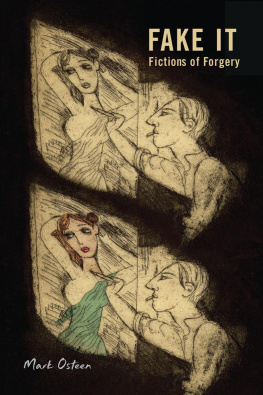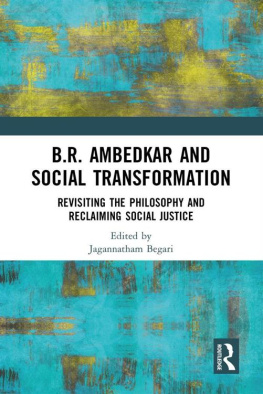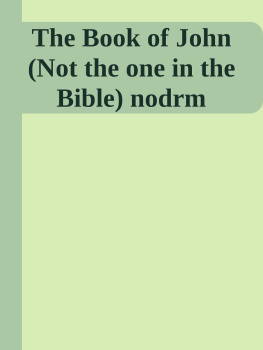Unknown - Convolutional Neural Networks in Python: Master Data Science and Machine Learning with Modern Deep Learning in Python, Theano, and TensorFlow (Machine Learning in Python)
Here you can read online Unknown - Convolutional Neural Networks in Python: Master Data Science and Machine Learning with Modern Deep Learning in Python, Theano, and TensorFlow (Machine Learning in Python) full text of the book (entire story) in english for free. Download pdf and epub, get meaning, cover and reviews about this ebook. year: 2016, publisher: LazyProgrammer, genre: Computer. Description of the work, (preface) as well as reviews are available. Best literature library LitArk.com created for fans of good reading and offers a wide selection of genres:
Romance novel
Science fiction
Adventure
Detective
Science
History
Home and family
Prose
Art
Politics
Computer
Non-fiction
Religion
Business
Children
Humor
Choose a favorite category and find really read worthwhile books. Enjoy immersion in the world of imagination, feel the emotions of the characters or learn something new for yourself, make an fascinating discovery.

- Book:Convolutional Neural Networks in Python: Master Data Science and Machine Learning with Modern Deep Learning in Python, Theano, and TensorFlow (Machine Learning in Python)
- Author:
- Publisher:LazyProgrammer
- Genre:
- Year:2016
- Rating:5 / 5
- Favourites:Add to favourites
- Your mark:
- 100
- 1
- 2
- 3
- 4
- 5
Convolutional Neural Networks in Python: Master Data Science and Machine Learning with Modern Deep Learning in Python, Theano, and TensorFlow (Machine Learning in Python): summary, description and annotation
We offer to read an annotation, description, summary or preface (depends on what the author of the book "Convolutional Neural Networks in Python: Master Data Science and Machine Learning with Modern Deep Learning in Python, Theano, and TensorFlow (Machine Learning in Python)" wrote himself). If you haven't found the necessary information about the book — write in the comments, we will try to find it.
Unknown: author's other books
Who wrote Convolutional Neural Networks in Python: Master Data Science and Machine Learning with Modern Deep Learning in Python, Theano, and TensorFlow (Machine Learning in Python)? Find out the surname, the name of the author of the book and a list of all author's works by series.
Convolutional Neural Networks in Python: Master Data Science and Machine Learning with Modern Deep Learning in Python, Theano, and TensorFlow (Machine Learning in Python) — read online for free the complete book (whole text) full work
Below is the text of the book, divided by pages. System saving the place of the last page read, allows you to conveniently read the book "Convolutional Neural Networks in Python: Master Data Science and Machine Learning with Modern Deep Learning in Python, Theano, and TensorFlow (Machine Learning in Python)" online for free, without having to search again every time where you left off. Put a bookmark, and you can go to the page where you finished reading at any time.
Font size:
Interval:
Bookmark:
Convolutional Neural Networks in Python Master Data Science and Machine Learning with Modern Deep Learning in Python, Theano, and TensorFlow By: The LazyProgrammer ( http://lazyprogrammer.me )
But we will show that convolutional neural networks, or CNNs, are capable of handling the challenge! Because convolution is such a central part of this type of neural network, we are going to go in-depth on this topic. It has more applications than you might imagine, such as modeling artificial organs like the pancreas and the heart. I'm going to show you how to build convolutional filters that can be applied to audio, like the echo effect, and I'm going to show you how to build filters for image effects, like the Gaussian blur and edge detection. After describing the architecture of a convolutional neural network, we will jump straight into code, and I will show you how to extend the deep neural networks we built last time with just a few new functions to turn them into CNNs. We will then test their performance and show how convolutional neural networks written in both Theano and TensorFlow can outperform the accuracy of a plain neural network on the StreetView House Number dataset. All the materials used in this book are FREE.
You can download and install Python, Numpy, Scipy, Theano, and TensorFlow with pip or easy_install. Lastly, my goal is to show you that convolutional networks arent magical and they dont require expert-level math to figure out. Its just the same thing we had with regular neural networks: y = softmax( relu(X.dot(W1).dot(W2) ) Except we replace the first dot product with a convolution: y = softmax( relu(conv(X, W1)).dot(W2) ) The way they are trained is exactly the same as before, so all your skills with backpropagation, etc. carry over.
Train and Predict You should know that the basic API that we can use for all supervised learning problems is fit(X,Y) or train(X,Y) function, which takes in some data X and labels Y, and a predict(X) function which just takes in some data X and makes a prediction that we will try to make close to the corresponding Y. Predict We know that for neural networks the predict function is also called the feedforward action, and this is simply the dot product and a nonlinear function on each layer of the neural network. e.g. z1 = s(w0x), z2 = s(w1z1), z3 = s(w2z2), y = s(w3z3) We know that the nonlinearities we usually use in the hidden layers is usually a relu, sigmoid, or tanh. We know that the output is a sigmoid for binary classification and softmax for classification with >= 2 classes. Train We know that training a neural network simply is the application of gradient descent, which is the same thing we use for logistic regression and linear regression when we dont have a closed-form solution.
We know that linear regression has a closed form solution but we dont necessarily have to use it, and that gradient descent is a more general numerical optimization method. W W - learning_rate * dJ/dW We know that libraries like Theano and TensorFlow will calculate the gradient for us, which can get very complicated the more layers there are. Youll be thankful for this feature of neural networks when you see that the output function becomes even more complex when we incorporate convolution (although the derivation is still do-able and I would recommend trying for practice). At this point you should be familiar with how the cost function J is derived from the likelihood and how we might not calculate J over the entire training data set but rather in batches to improve training time. If you want to learn more about backpropagation and gradient descent youll want to check out my first course on deep learning, Deep Learning in Python part 1, which you can find at https://udemy.com/data-science-deep-learning-in-python Data Preprocessing When we work with images you know that an image is really a 2-D array of data, and that if we have a color image we have a 3-D array of data where one extra dimension is for the red, green, and blue channels. In the past, weve flattened this array into a vector, which is the usual input into a neural network, so for example a 28 x 28 image becomes a 784 vector, and a 3 x 32 x 32 image becomes a 3072 dimensional vector.
In this book, we are going to keep the dimensions of the original image for a portion of the processing. Where to get the data used in this book This book will use the MNIST dataset (handwritten digits) and the streetview house number (SVHN) dataset. The streetview house number dataset is a much harder problem than MNIST since the images are in color, the digits can be at an angle and in different styles or fonts, and the dimensionality is much larger. To get the code we use in this book youll want to go to: https://github.com/lazyprogrammer/machine_learning_examples And look in the folder: cnn_class If youve already checked out this repo then simply do a git pull since this code will be on the master branch. I would highly recommend NOT just running this code but using it as a backup if yours doesnt work, and try to follow along with the code examples by typing them out yourself to build muscle memory. Once you have the machine_learning_examples repo youll want to create a folder adjacent to the cnn_class folder called large_files if you havent already done that for a previous class.
That is where we will expect all the data to reside. To get the MNIST data, youll want to go to https://www.kaggle.com/c/digit-recognizer I think its pretty straightforward to download at that point. Were only going to use the train.csv file since thats the one with labels. You are more than welcome to attempt the challenge and submit a solution using the techniques you learn in this class. You can get the streetview house number data from http://ufldl.stanford.edu/housenumbers/ Youll want to get the files under format 2, which are the cropped digits.
If you really want to dig deep on this topic youll want to take a course on signal processing or linear systems. So what is convolution? Think of your favorite audio effect (suppose thats the echo). An echo is simply the same sound bouncing back at you in the future, but with less volume. Well see how we can do that mathematically later. All effects can be thought of as filters, like the one Ive shown here, and they are often drawn in block diagrams. ------- x(t)--->| h(t) |--->y(t) ------- Im representing our audio signal by this triangle. ------- x(t)--->| h(t) |--->y(t) ------- Im representing our audio signal by this triangle.
Font size:
Interval:
Bookmark:
Similar books «Convolutional Neural Networks in Python: Master Data Science and Machine Learning with Modern Deep Learning in Python, Theano, and TensorFlow (Machine Learning in Python)»
Look at similar books to Convolutional Neural Networks in Python: Master Data Science and Machine Learning with Modern Deep Learning in Python, Theano, and TensorFlow (Machine Learning in Python). We have selected literature similar in name and meaning in the hope of providing readers with more options to find new, interesting, not yet read works.
Discussion, reviews of the book Convolutional Neural Networks in Python: Master Data Science and Machine Learning with Modern Deep Learning in Python, Theano, and TensorFlow (Machine Learning in Python) and just readers' own opinions. Leave your comments, write what you think about the work, its meaning or the main characters. Specify what exactly you liked and what you didn't like, and why you think so.









